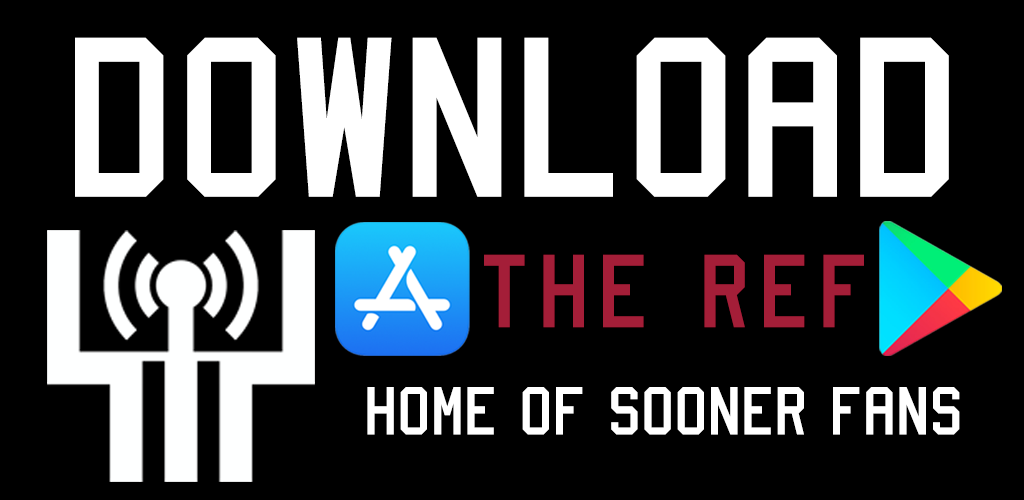Scott Sewell-USA TODAY Sports
A 4-3 defensive package might help OU handle the physical ground attack of the Wildcats.
Assuming the Oklahoma Sooners and Kansas State Wildcats actually play this weekend, the country will get its first real look at the defending Big 12 champion.
Hidden behind the cover of a $54.99 pay-per-view fee, OU rolled the hapless Missouri State Bears two weeks ago in its first game. The Sooners didn’t seem to be suffering from the departure of stars like receiver CeeDee Lamb and linebacker Kenneth Murray. You can’t draw firm conclusions based on a walkover like that, though.
You could say K-State represents OU’s first legitimate test of the season, although the Wildcats’ credibility took some serious damage after they dropped their season opener to Arkansas State. As KSU proved a year ago, however, coach Chris Klieman’s team can still create matchup issues for the Sooners with its rugged style of play.
Rewinding the KSU run game
Historically, Klieman’s teams build their offenses around a physical running game. The Wildcats proved how effective that can be last season in their upset win over OU.
In 2019, the Wildcats came armed with crafty run-blocking schemes and misdirection plays to screw with the keys of OU’s defenders, using their aggressiveness against them. KSU really got its jollies by sealing the edge around the line of scrimmage to create spacious running lanes and force OU’s defensive backs to fill run gaps out wide. In the end, the Wildcats ran the ball 45 times and dominated the clock.
That type of game plan is going to be a tougher ask for this season’s Wildcats. The offensive line has seen major turnover from ‘19, and the unit appeared as inexperienced and out of sync as would be expected in KSU’s first game. That showed up in part in the team’s rushing output — even excluding sacks and a big loss from a botched shotgun snap, the Wildcats only averaged 3.5 yards per attempt.
Given the coronavirus absences felt throughout the program in recent weeks, K-State hasn’t had much of an opportunity to clean up the issues that surfaced in game one. As such, Klieman and KSU offensive coordinator Courtney Messingham probably can’t expect to push OU around up front.
Scott Sewell-USA TODAY Sports
If KSU does get anything going on the ground, it will likely come from one of two Wildcats. First is QB Skylar Thompson , who has proven over time to be an effective on draw plays out of spread formations. However, Thompson’s mobility could still be limited after appearing to suffer an injury in the second quarter against ASU. The other is running back Deuce Vaughn — a diminutive freshman who showed some shiftiness in his KSU debut last week, churning out 47 yards and a touchdown on 12 carries.
Scott Sewell-USA TODAY Sports
Interestingly, KSU’s weapons on the perimeter may scare the Sooners more than their opponent’s ground game. Thompson completed 17 of his 29 passes versus Arkansas St. for 259 yards and two TDs. His favorite targets included lanky receiver Chabastin Taylor (6-4, 223 pounds) and tight end Briley Moore (6-4, 250). Both can use their size to outmuscle OU’s undersized DBs if given the opportunity. Additionally, sophomore Malik Knowles has enough speed to create problems if he can shake loose deep down the field.
A 4-3 solution?
What can OU defensive coordinator Alex Grinch do to counteract the Wildcats if KSU opts to go ground-and-pound? Last season, OU occasionally deployed a traditional 4-3 alignment against similarly-intended opponents. In effect, Grinch pulled the nickelback off the field and subbed in a SAM linebacker to give the Sooners a bigger run defender to the strong side of the offensive formation.
In the image above from ‘19, the Kansas Jayhawks are using 12 personnel (one running, two H-backs/tight ends), which is also one of KSU’s preferred groupings. OU lines up in the equivalent of a 4-3 under look. The nose tackle shades the center to the strong side of the formation with a five-tech defensive end to his left, who is across from the tackle’s outside shoulder. There’s a three-tech defensive tackle on the weak side, and the RUSH LB is essentially playing as a stand-up DE on the same side. On the second level, Grinch is playing an additional OLB in space to the field side of the formation as a SAM LB.
Personnel-wise, Grinch stuck OLB David Ugwoegbu at SAM in the 4-3 alignment in ‘19, leaving Jon-Michael Terry and Nik Bonitto to rotate at RUSH. After JMT was lost for the season with an injury, Ugwoegbu ended up staying on the weak side for the remainder of the year.
But the Sooners once again have a solid rotation between JMT and Bonitto at RUSH, so why not utilize the 4-3 from time to time this year? One complication is that Ugwoegbu has switched inside to MIKE LB. The lack of depth at ILB may make Ugwoegbu too valuable to take snaps away from his new home position.
Photo by David Stacy/Icon Sportswire via Getty Images
On the other hand, OU does have a few candidates who might be able to fill in at SAM in Ugwoegbu’s place. Freshman LB Brynden Walker , for instance, has the bulk at 251 pounds to hold up on the edge against KSU’s downhill running game. The same goes for JMT, in fact, so long as Walker or redshirt freshman Joseph Wete could rotate with Bonitto at RUSH. Another option might be using ILB Robert Barnes , a converted safety, at SAM, although that would sacrifice a little size (232 pounds) at the position.
Of course, OU could also sit tight in its standard nickel base. The Sooners are favored by four touchdowns, so extreme measures shouldn’t be necessary. Moreover, staying with a coverage player instead of a run stopper could come in handy against KSU’s burly receiving corps. Even so, putting a solid 4-3 option in his bag could still pay dividends down the line for Grinch this season.




